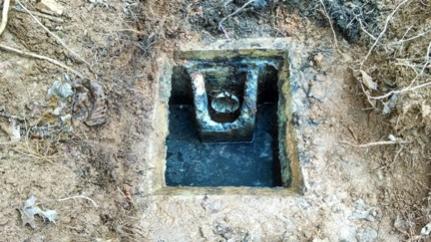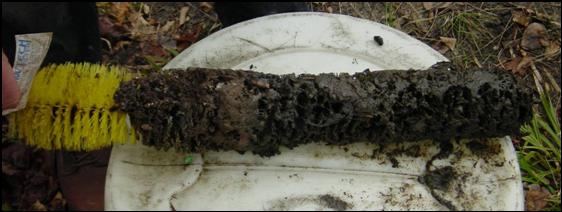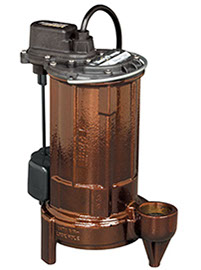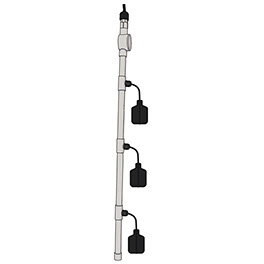Maintaining Your Septic System: An Essential Guide
- jjtforwardcorp
- Sep 2, 2023
- 3 min read

While we might prefer to install a septic system and forget about it, regular maintenance is essential not only for its functionality but also to prevent environmental damage from wastewater and to avoid costly repairs. Similar to other home systems like HVAC and water heaters, your septic system requires periodic care. This guide will inform you about the necessary upkeep for various septic system components.
The specific maintenance needed for your septic system largely depends on the type of system installed. This overview will discuss the common septic systems and the associated maintenance tasks.
Gravity Systems:
A Gravity Septic System uses gravity to move wastewater through its components. These systems are straightforward and have been widely used in the past. They require minimal maintenance, which is a significant benefit. We’ll concentrate on the essential maintenance checks for these systems.
1. Outlet Tee or Baffle - Annual Inspection
The outlet tee or baffle in a gravity system prevents the scum layer from entering the leach field. A compromised outlet tee can quickly result in system failure. Check annually to ensure these components are intact, particularly in concrete tanks where baffles can erode.
2. Effluent Filter - Annual Cleaning
Filters in some gravity systems prevent tiny waste particles from reaching the leach field. To avoid clogs and potential backups, these filters should be cleaned yearly.
3. Regular Pumping - Every 2-4 Years
Pumping is vital for any septic system to remove solids that accumulate over time. Frequency depends on household size and water usage.

Pressure Dosed Systems:
These systems are more complex than gravity systems and require more frequent maintenance, but they provide superior wastewater treatment. The following components need regular attention:
1. Outlet Tee or Baffle
Similar to gravity systems, checking the outlet tee or baffle yearly is crucial to prevent system failure.
2. Effluent Filter
Certain septic systems incorporate a filter within the outlet tee, which serves as a barrier against small suspended solids, known as effluent, from entering your Soil Treatment Area (STA). These filters are highly effective in safeguarding your leach field; however, if they are not maintained and become clogged, the water is likely to divert to the easiest exit, often leading straight into your basement. To prevent such issues, it is essential to have your effluent filter cleaned at least once a year.
3. Pump & Float Switches - Annual Check
Pressure dosed septic systems rely on a pump to propel water into the Soil Treatment Area (STA). This system design comes with several advantages; however, components like the pump and float switches may require periodic replacement. The lifespan of a pump can range from 10 to 20 years with proper upkeep, while float switches, which are less expensive, may need more frequent changes. These switches are responsible for activating the pump and can signal an alarm if there's a malfunction. Annual inspections and timely replacements of these components are advisable to maintain system integrity.
4. Annually Inspect Alarm, Control Panel, and Electrical Connections
These critical components orchestrate the operation of your pump by signaling when to activate or deactivate, a process managed by interaction with the float switches. Modern control panels and alarms possess the capability to monitor the pump's activity, including the frequency of activation and duration of operation per cycle, providing early indications of any impending issues. To guarantee the smooth functioning of your system, consistent upkeep of these elements is essential.

5. Lateral Flushing - Check Every 2-4 Years
Certain Soil Treatment Areas are designed to purge accumulated organic material, which is vital for preventing clogs in your leach field. It's advisable to undertake this maintenance task every two to four years to ensure the continued protection and efficiency of your leach field.

6. Pumping of Septic System - Every 2-4 Years
It's necessary to pump out septic systems at regular intervals. The reason is that Soil Treatment Areas are equipped to process only water and minor organic particles. Larger solids are collected in the septic tank and, over time, can fill it up, leading to potential problems if not cleared out. It is suggested that households with more occupants schedule pumping every two to three years, whereas those with fewer residents may extend the interval to every four years.

For systems not covered here or for specific maintenance queries, you can reach out to us at 720-289-9736 for guidance.
We provide maintenance contracts that distribute the cost monthly and ensure your services are scheduled and managed without hassle. Contact our office to enroll in this worry-free maintenance program.














Kommentare